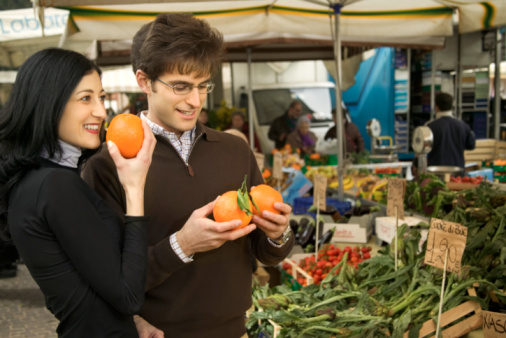A recently released study highlights the accessibility of organic food in the Southeastern portion of the United States, where investigations found price points lower, on average, at farmers’ markets than in chain stores. SCALE, Inc.’s Is Local Food Affordable for Ordinary Folks? report noted that organic was 16% less expensive at farmers markets in 88% of the studied communities in Virginia, Tennessee, West Virginia, Kentucky, North Carolina and South Carolina.
Anthony Flaccavento, president of SCALE, Inc. and study author, says that it is difficult to examine this price relationship throughout the rest of the country without further research. His guess, based on anecdotal evidence, is that farmers’ market prices in general are higher in large urban and affluent areas of the country. He would credit this to higher land taxes and to the ability of consumers in these areas to pay higher prices. “I suspect that organic prices are actually more competitive with grocery store prices in these other places than conventional produce is, as I’ve found that the difference between organic and conventional pricing at farmers markets tends to be smaller than the difference at supermarkets,” Flaccavento says.
The prices at the two supermarkets used to track organic in the study, Whole Foods Market and Earth Fare, were culled from the lowest priced option available, perhaps biasing the averages in favor of the supermarkets. Still, farmers’ market prices came out ahead in most cases. These results may point to the reality that supermarkets will be competing heavily for organic shopper dollars with local food vendors in the future. As Flaccavento attests based upon his experience as an organic vendor, many local food shoppers also demand organic standards from their produce. “A significant proportion of people seek our produce, or that of the other organic vendors, primarily because we are organic,” he says.
Within the range of local produce options, many shoppers turn to conventional vendors only if a particular item is unavailable from an organic source, according to Flaccavento. Referring to the broad customer base that his organic business has cultivated, from senior citizens on fixed incomes to low-income people, he says, “Some of these folks have been won over by organic and now prefer it, while others simply think that the superior quality merits the slightly higher prices we generally charge.” However, though the share of the organic food “pie” enjoyed by local food vendors is growing, Flaccavento notes that there are still obstacles. In particular, a media-promoted “either/or” dichotomy between “local” and “organic” sends the wrong message, “when in fact a far higher percentage of farmers who sell locally use organic practices, at least to a substantial degree,” he says.
Published in WholeFoods Magazine, January 2012











